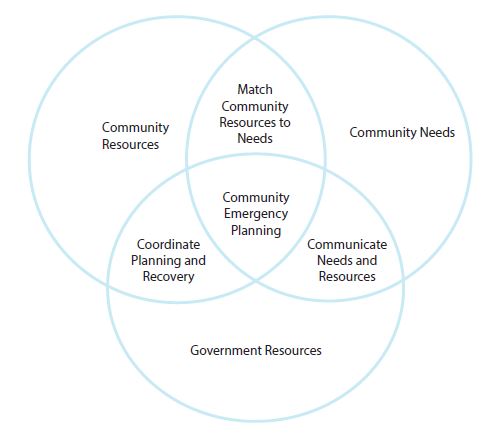Introduction
Emergency response in New York City is often challenged by the complexity of our physical and social environment. Communities are best understood by their own residents—a fact that makes community-based emergency planning and response highly effective.
Each year, New York City experiences emergencies of all shapes and sizes. With aging infrastructure, higher frequency of natural disasters, and threats of terrorism, New York City is increasingly vulnerable. History and research have shown that communities that understand how to leverage internal networks are more successful in using their own resources and ultimately respond more effectively to their communities’ needs.
The purpose of this toolkit to help your community become more resilient through a process of identifying existing networks, building new connections, and increasing your capacity to organize internal and external resources.
Create a plan with your community now so that you are better prepared for the next emergency.
WHAT IS IN THIS TOOLKIT?
-
New York City specific guidance for emergency planning
-
A plan template and scenarios for communities to develop their own emergency plan
-
Examples of other community emergency planning efforts
WHO IS IT FOR?
This toolkit is designed to be a group process. You define your own community - successful planning has been done by housing developments, congregations, neighborhoods, etc. Examples of groups that could use the toolkit include:
-
Tenant or civic associations
-
Faith-based groups
-
Community Emergency Response Teams (CERTs)
-
Community-based organizations (CBOs)
-
Community boards/coalitions
COMMUNITY EMERGENCY PLANNING LET’S GET STARTED!
Your first step is to form a “lead team” – a group of interested community members who are willing to commit time and energy to this effort. This team will be responsible for building a network of relationships and making decisions that form the basis of your community emergency plan. The lead team will use the sections in the toolkit as a guide through the process of creating an emergency plan.
This toolkit and the emergency plan you develop will make use of the resources, organizations, and individuals that are already in your community. The process itself—building connections and learning about your community—is JUST AS IMPORTANT as the final plan.
WHAT DOES THIS PROCESS LOOK LIKE?
| TOOLKIT PLANNING PROCESS | OUTCOMES | |
|---|---|---|
| WORKBOOK SECTIONS | EMERGENCY PLAN TEMPLATE | |
| Emergencies in NYC • How does the City plan for emergencies? How can your community respond in an emergency? |
• Plan Maintenance • Community Overview • Resource Directory • Hazard- Specific Response Quicksheet |
A community response network made up of local residents and resources. |
| Planning and Preparedness • Explore the defining characteristics of your community. Map its resources and identify vulnerabilities. Learn how to build an inclusive network of partners that can execute your plan. |
• Emergency Communications Chart • Community Needs Assessment Chart • Community Resource Assessment Chart |
An emergency plan that organizes information about actions to take before, during, and after an emergency. |
| Emergency Response • Four simple but powerful roles that a community can play in an emergency: communication, identifying needs, assessing resources, and connecting people to those resources. |
• Emergency Staffing Chart • Volunteer Operations Chart • Communication /Distribution Center checklist |
A more resilient community! |


User Comments/Questions
Add Comment/Question